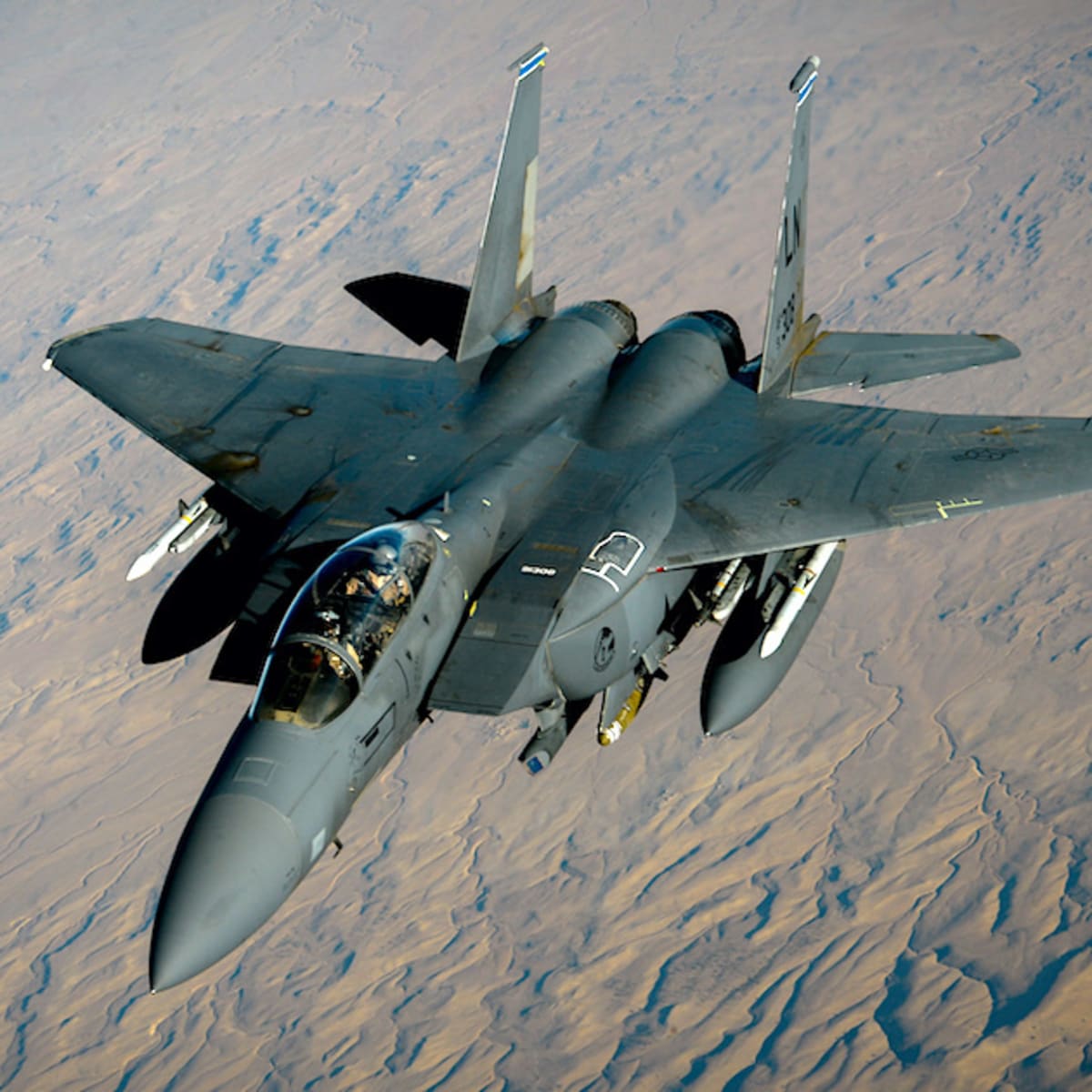Yesterday evening, a U.S. fighter jet came dangerously close to an Iranian civilian airliner, prompting a rapid descent and minor injuries on board. Below, please find our breakdown and analysis of the events:
F-15 Comes within 1000 Meters of Iranian Airliner
- Plane Forced to Make Emergency Maneuvers
- Late Thursday evening, on July 23rd, a U.S. F-15 fighter came roughly1,000 meters of an Iranian civilian airliner operated by Mahan Air (which is currently sanctioned by the U.S.), prompting the plane to undertake a rapid descent. Videos of the encounter from passengers on the plane broadcast on Iranian state TV showed the plane’s rapid descent and chaos on board, with a few injured in the aftermath. Flight 1152 had taken off from Tehran and was en route to Beirut when the incident happened near Syria’s al-Tanf region.
- In a statement on Friday, the Civil Aviation Organization of Iran urged the international agency charged with overseeing international airspace to immediately address the move, which it said was “a clear violation of the international law and the aviation standards and regulations. Our passenger plane was moving at the international commercial flight route and corridor, and the American fighter jets’ threatening move was unlawful and inhumane.”
- In reference to the incident, Capt. Bill Urban, spokesman for U.S. Central Command, said in a statement that, “a U.S. F-15 on a routine air mission in the vicinity of the [U.S. Tanf] garrison in Syria conducted a standard visual inspection of a Mahan Air passenger airliner at a safe distance of approximately 1,000 meters from the airliner this evening. The visual inspection occurred to ensure the safety of coalition personnel at Al Tanf garrison. Once the F-15 pilot identified the aircraft as a Mahan Air passenger plane, the F-15 safely opened distance from the aircraft. The professional intercept was conducted in accordance with international standards.”
-
- While CENTCOM’s statement did not reference a second fighter, a defense official who spoke to the Washington Post mentioned that a second U.S. aircraft was in the vicinity but held back. They also said it was possible that one of the U.S. fighters may have been close enough to trigger an audio collision alarm in the passenger plane’s cockpit.
- In a tweet on July 24th, Iranian Foreign Minister Javad Zarif said that he “U.S. illegally occupies territory of another State and then harasses a scheduled civil airliner—endangering innocent civilian passengers—ostensibly to protect its occupation forces. Audacity to compound lawlessness upon lawlessness.” Iranian Vice-President for Legal Affairs Laya Joneydi also said the “harassment of a passenger plane is a clear violation of inalienable rights and principles of the international law.”
- The U.S. military maintains a presence in Syria, especially in the Tanf region, largely to prevent others – including Iranian forces – from occupying the territory. Surrounding the U.S. encampment is a 30-mile air and ground exclusion zone. The base sits along a highway connecting Damascus to Baghdad and Tehran to the east. In the past, U.S. forces have shot down several Iranian drones and fired on Iranian-linked forces when they ventured within the zone around the base.
- Key Takeaways
-
- The fact that an Iranian civilian aircraft felt it had to take evasive maneuvers to avoid contact with military aircraft over Syria is yet another reminder of the many innocent lives at risk over the reckless heightening of tensions. While U.S. and Iranian militaries routinely have dangerous run-ins – particularly on the high seas – this encounter was seen by many in Iran as a new provocation.
- The incident also struck a chord given the long history between the U.S. and Iran, including the 1988 downing of an Iranian civilian aircraft by the U.S.S. Vincennes – which killed 290 innocent people – and sanctions that have blocked Iran from replenishing its airfleet – among the most outdated and dangerous in the world.
- Moreover there are still many questions that remain unanswered about the incident. In particular, it is unclear what actions prompted the inspection of the Iranian aircraft. Given that this route is a major airspace corridor between two major Middle East capitals, we still do not know why this aircraft required a visual inspection and other aircraft which routinely pass through do not.
- There has so far been no indication that the aircraft had deviated from an internationally recognized route or that it exhibited any unusual behavior to warrant the inspection. Moreover, it is still unclear if U.S. personnel were able to communicate with their Iranian counterparts in the air and if the airliner was given proper warnings prior to the inspection.
- CENTOM’s statement does not address these concerns, nor has any U.S. official since this update was written. Unless more specifics are provided by administration officials, lawmakers should consider inquiring more about the incident to clarify what led to the incident and ensure that the situation does not escalate.
